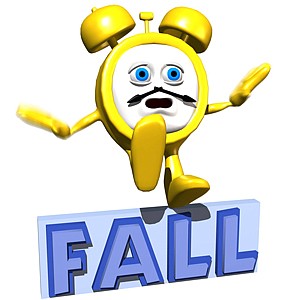BALTIMORE — The holiday season is a time of fun and family, but it can also be a time of increased danger, especially for seniors. Fall-related deaths among seniors have almost tripled since 2000 according to the Centers for Disease Control. Every 11 seconds an older adult is treated in the emergency room for a fall; every 19 minutes an older adult dies from a fall reports the National Council on Aging.
With wet, snowy, and icy weather ahead it’s important to keep in mind what we can do to keep our seniors and disabled loved ones safe. Mud, slippery and frozen surfaces are treacherous factors that can lead to increased falls. But so can the holidays.
Holiday activities cause dangerous falls not only for seniors but also for people of all ages. A study by Centers for Disease Control estimates that approximately 5800 persons each year are treated in U.S. hospital emergency departments for holiday decorating
related falls. The majority of falls were from ladders (e.g., while hanging holiday lights), followed by roofs (e.g., while mounting an artificial Christmas tree on the roof), furniture (e.g., while standing on a table decorating a Christmas tree, standing on a chair hanging holiday decorations, or standing on a step stool when hanging a tree topper), stairs, and porches. Other falls were caused by tripping over or slipping on holiday-related objects like tree skirts, ornaments, and electrical cords.
Here are 10 holiday season safety tips from Dr. Levan Atanelov, Director of Baltimore’s Steady Strides Fall Prevention and Stroke Rehabilitation Medical Institute:
- Watch the weather report and plan your activities around high hazard days.
- Scan your environment to identify unsafe areas. Avoid walkways with cracks, potholes and uneven surfaces. Report to your local city government if you notice unsafe public spaces to help yourself and others.
- Consider using walking sticks and hiking boots with good traction in muddy conditions. Avoid high heels.
- In snowy/icy areas have the steps, walkways and sidewalks cleared of snow and salted.
- Wear boots in snow and ice with good traction and rubber soles. Consider using traction cleats over boots. For extra protection use boots that reach above the ankles.
- When using a cane, get an ice gripper cane tip.
- Carry kitty litter for slick surfaces. Encourage older adults to carry a Ziploc bag filled with a lightweight kitty litter in their pocket and cast it out ahead of themselves on very slick surfaces.
- Go out with a friend for increased safety or consider having daily necessities like food and medications delivered.
- Use ladders safely when hanging holiday decorations and whenever possible use safer alternatives such as step stools instead of furniture when hanging decorations. Mark trip hazards like cords with bright colored tape.
- Gift the gift of falls prevention.
Here are some gift suggestions from the National Council on Aging.
• Fall alarm systems that are motion triggered without hitting a button
• Higher toilets in the home
• Replace multifocal glasses with single vision eyeglass lenses
• Grab bars in bathroom and next to outside steps or inside thresholds
• Install firm stair railings on both sides of stairways and set automatic lights over stairways and by outside entrances
• Cover the entryway to the home and provide a table to set down bags while finding keys
• Shorter days mean more time in the dark—give tiny flashlights to attach to keys, hats, and coat buttons
One important thing to keep in mind is that older adults don’t fall just because of unsafe surfaces in the environment. The same people did not fall in the same environment when they were younger. Older adults fall because nine out of 10 times there are biomechanical vulnerabilities causing balance and gait disorders which can be identified and cor- rected to prevent further falls. It is therefore important to undergo a thorough biomechanical assessment by a physician trained to help diagnose and treat fall risk, balance and gait deficits.
